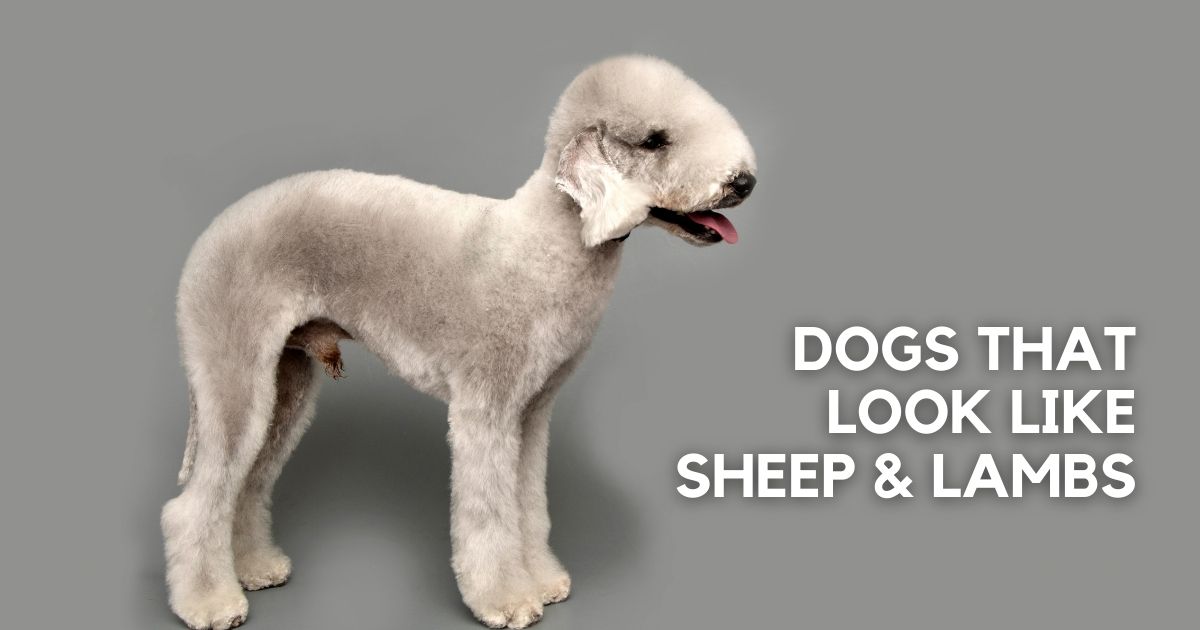To start off with, there are many similarities between the German Shepherd and Blue Heeler dog, making it a hard decision which one to choose.
Both dogs were originally bred and used for the purpose of herding and outdoor work.
As a result of their genetic makeup, the German Shepherd and Blue Heeler have developed a resistance to the elements and harsh or extreme weather conditions.
They are intelligent, energetic, hard-working, and tough dogs which take a pride in doing any kind of job for their human.
Despite the amount of similarities, there are also differences between the two breeds.
This article will discuss the main facts about each dog breed, and also focus on the differences between the German Shepherd vs Blue Heeler.
This information can help tell the two breeds apart and choose which one is better for you.
| Attributes | German Shepherd | Blue Heeler |
| Good For First Time Owners | Yes | No |
| Good Guard Dog | Yes | Yes |
| Apartment Friendly | Yes | No |
| Good Family Dog | With Training | Yes |
| Shedding | High | Moderate |
| Barking And Howling | Moderate To High | Moderate |
| Height | 22-26 inches (55-65 cm) | 17-20 inches (43-51 cm) |
| Average Life Expectancy | 12-14 Years | 12-14 Years |
[wpsm_toplist]
German Shepherd – Dog Breed Information
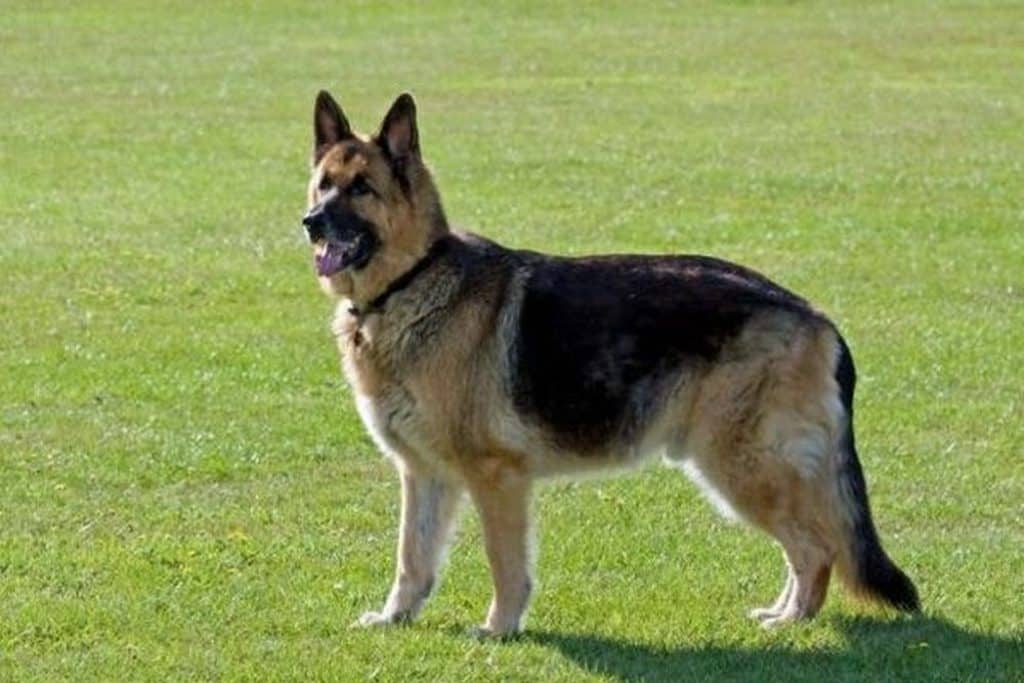
The German Shepherd is a medium to large sized herding dog which first originated in Germany back in the year 1899.
Originally bred to herd and guard flocks of sheep, these intense dogs have since been used for many purposes throughout the years.
They have served in police forces, military forces, and worked as sniffer dogs, rescue dogs, and tracking dogs.
What makes this dog so versatile and useful to humans?
The German Shepherd is widely known and greatly valued for a number of his remarkable attributes.
They are extremely intelligent, trainable, and obedient. They learn quickly, think quickly, and are adaptable to a number of situations.
German Shepherds are eager and willing to please their owner, and love completing challenges or having a job to do.
Apart from that, the German Shepherd is an outstanding guard dog. He has strong protection instincts, and is highly alert, watchful, and able to detect threat and danger.
Additionally, training can make him one of the best protection dogs out there.
The German Shepherd is brave, strong, fast, enduring, and extremely hardy, being able to stand up to anyone fearlessly.
Though aloof and very cautious when it comes to strangers, the German Shepherd is an extremely loyal and loving family dog.
He gets strongly attached to his family, and will be very protective of each member, including children. However, the German Shepherd is a one man dog.
This basically means that he will be the closest to one family member in particular.
Although he will love everyone in his family, he will likely be most attached to the person who mainly looks after him.
As for the exercise requirements of this breed, the German Shepherd is an active and energetic dog as of nature.
He needs on average an hour of exercise daily, though some individuals may desire more or less.
These dogs do well with two or three walks every day as well as additional playtime, but from time to time do need to have a good run.
This dog is a very adaptable breed, making him perfect for all kinds of situations. He will easily get used to living in any sort of home.
It’s not hard for this breed to adjust to a small home, or to limited or irregular physical activity (though this is not recommended).
These dogs are most happy when being able to let their energy out every day.
They also enjoy training with their human, and need plenty of mental stimulation to prevent boredom.
They like having work or tasks to complete, as well as engaging in learning, [amazon link=” B0719Q89X8 ” title=”interactive games” link_icon=”amazon” /], exploring new places, or following commands.
[amazon box=”B0719Q89X8″]
This satisfies their natural desire to use their minds and to please their owner.
The most common color combination which a German Shepherd comes in is black and tan.
They also come in solid black, tan and liver, red and black, sable, and a few other colors.
This dog does tend to shed a lot, especially during shedding season, so a decent brush once or twice a week is recommended.
Blue Heeler (Australian Cattle Dog) – Dog Breed Information
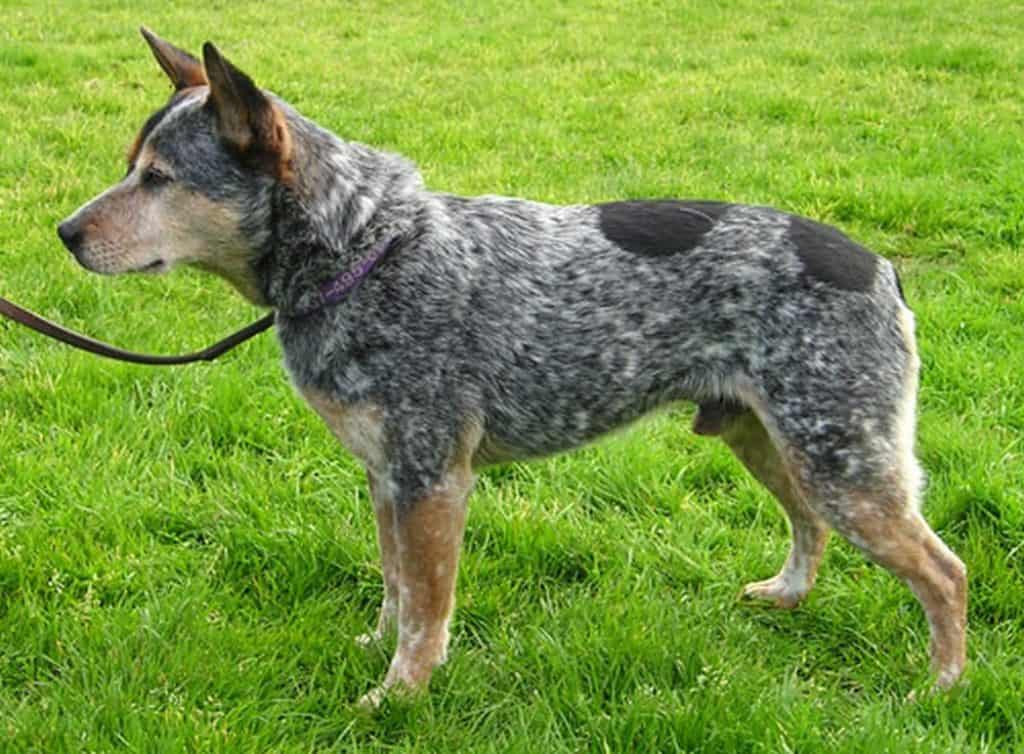
Blue Heelers, also known as Australian Cattle Dogs, may not appear as fierce to some people as the German Shepherd.
However, this doesn’t make the Blue Heeler any less hardy.
This medium sized dog is very tough as of nature, and great for working outdoors.
They can adapt great even to living in a very hot climate, as they originated in the land of Australia back in the 1820’s.
At that time, these dogs were used for driving cattle through Australian terrains, and proved to excel at this job.
They earned their name ‘Blue Heeler’ due to the fact that will often nip the heels of cattle as a way of urging them forward.
Blue Heelers can work in any conditions, including in very hot temperatures, as well as in the cold and rain.
They have remarkable endurance and stamina, which makes them fit for any task or job.
They can go on for hours without becoming tired, and are both obedient and willing to work with their owner.
The intelligence and learning abilities of the Blue Heeler are immensely high, which makes them very trainable dogs.
They are, however, prone to being stubborn.
As for exercise, Blue Heelers need 1 to 2 hours of it per day to stay happy. They are extremely energetic and love to stay busy.
They are especially keen on engaging in outdoor activities, including running, swimming, and interactive games. They love to play and need a lot of space to roam free.
Apart from getting enough physical activity, these dogs also need plenty of mental stimulation on a regular basis.
Otherwise they will get bored quickly and start looking for something to chew on or play with.
As for the temperament of the Blue Heeler, this breed is very loyal and attached to his family. They will form the strongest bond with one person in particular from their family.
These dogs are wary of strangers and not usually intent on making friendly advances to those they do not know.
As a result of their keen alertness and cautious nature, they prove to be both great watch dogs and even guard dogs.
They are also courageous and brave dogs, not hesitant to protect their owner when they sense a threat.
They are even known to sometimes instinctively nip at the heels of intruders, which is a great way to frighten them off.
The coat of the Blue Heeler is straight and short, but they do have a double coat, and will shed throughout the year.
They need a good brush once a week or more, especially during shedding season.
The Blue Heeler will come in a blue speckle color – which can vary from a silver to a deep blue – with black and tan markings.
They also come in red speckle coat markings, and in this case they can be referred to as the ‘Red Heeler’.
German Shepherd Vs Blue Heeler – What Are The Differences?
| German Shepherd | Blue Heeler |
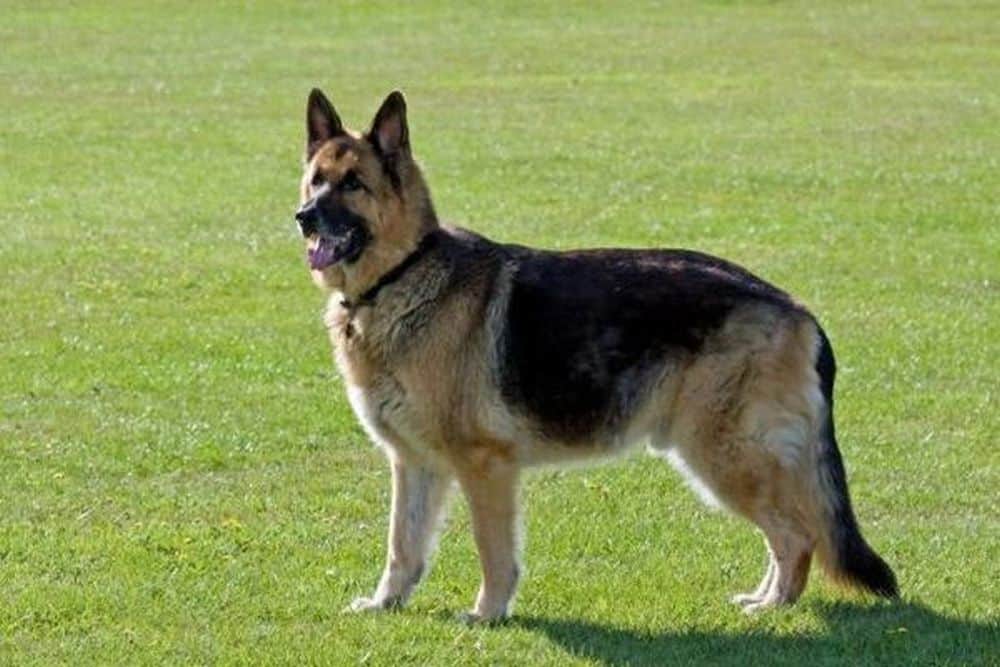 | 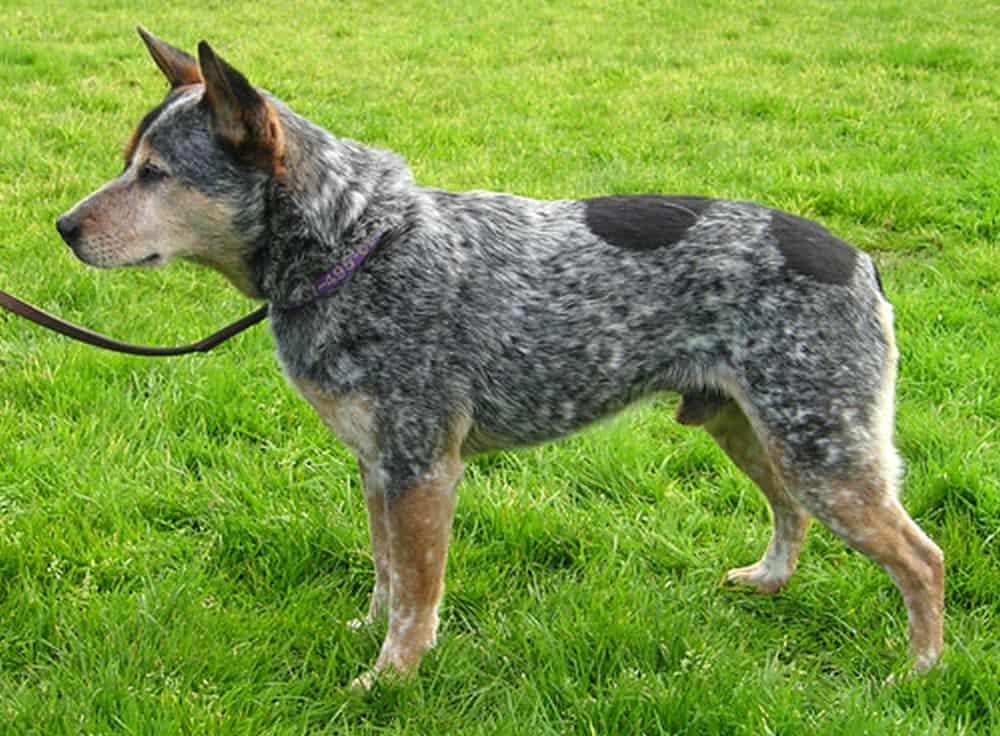 |
| Blue Heeler by Ellen Levy Finch (CC BY-SA 3.0) |
When it comes to the appearance of both breeds, there is no problem telling them apart.
The German Shepherd and Blue Heeler come in very different color combinations and markings.
There are much more colors that a German Shepherd dog can come in as opposed to the Blue Heeler.
Blue Heelers can only come in blue or red (in which case they are often known and referred to as the Red Heeler).
However, when it comes to the temperament, these breeds have much similarities and things in common. But there also differences between the German Shepherd vs Blue Heeler.
Origin
First of all, they originate from very different places and were used for herding different types of livestock.
The German Shepherd came about in Germany, descending from a number of various shepherd herding dogs.
These dogs were crossed with each other to achieve a shepherd dog possessing the perfect attributes that would make him ideal for herding.
This is how the German Shepherd came about. German Shepherds were used both to guard and herd flocks of sheep, and were excellent for that job.
From that time on, the popularity of the German Shepherd had grown immensely. In fact, these dogs are one of the most commonly owned breeds in the US.
Blue Heelers have a different origin, as these dogs first originated in Australia. Unlike the German Shepherd, Blue Heelers were used for work with cattle.
They came about by crossing a number of breeds to achieve this tough, hard-working herding dog.
This included mainly the Smithfields dog, the Australian Dingo, as well as the Dalmatian and Kelpie.
The Blue Heeler is a lot less popular than the German Shepherd.
Temperament
There are also a number of differences in the temperament of the German Shepherd vs Blue Heeler.
One of these is the stubbornness that is present with the Blue Heeler and not the German Shepherd. Whilst both breeds are eager to please,
Blue Heelers can sometimes display a stubborn attitude during training. This means more patience and time will have to be exercised when teaching this dog skills or commands.
German Shepherds tend to be much more attentive and cooperative during training.
For this particular reason, German Shepherds are also easier to handle for less experienced dog owners. They are more trainable, and more likely to listen and obey.
Blue Heelers can at times refuse to listen, or act upon their own thinking because of their stubborn nature.
German Shepherds are also much more adaptable and can easily get adjusted to living in a smaller space or a new situation.
When it comes to keeping any of these two breeds as a family dog, both are very loyal and affectionate toward family members.
However, German Shepherds tend to be more social, open to physical contact, and cuddling.
For this reason, they may be more suitable and adaptable companions for small children. Nonetheless, in the end it all depends on the personality of the individual.
Size
Another aspect which makes the German Shepherd and the Blue Heeler different is their size.
Though they need about the same level of physical activity, the smaller size of the Blue Heeler can make him suitable for more people.
Blue Heelers weigh 35 to 50 pounds, and their height is 17 to 20 inches.
On the other hand, German Shepherds weigh 50 to 90 pounds, and stand 22 to 26 inches, which is larger than the Blue Heeler.
Health
Lastly, when it comes to health, both of these dogs are prone to a few conditions.
However, Blue Heelers are usually healthier than the German Shepherd, and have a lower tendency to develop certain conditions.
On the other hand, a common condition the German Shepherd is prone to is hip dysplasia.
Hip dysplasia can occur in any large dog breed, but much more so in a German Shepherd.
The result of this is the recent way of breeding of German Shepherds which causes their backs to slope down.
There are many people that still breed the old type German Shepherds with straight backs.
However, the sloped back German Shepherd is on the increase, making these dogs more prone to hip and joint problems.
Conclusion
German Shepherds and Blue Heelers are highly active, energetic dogs with a need for daily exercise and mentally stimulating activities.
They are extremely intelligent and possess skills which make them great at guarding and protecting their owners.
But what about the differences?
German Shepherds are more adaptable dogs, and easier to train because of their highly obedient nature.
Contrastingly, Blue Heelers do tend to be stubborn at times. German Shepherds can also be more calm in the home and open to cuddling.
On the other hand, Blue Heelers take up less space as they are of a smaller size. They are also prone to fewer health concerns, making this a less expensive dog to own.
Both dogs have similar exercise requirements and are loyal to their family, but cautious with strangers.

